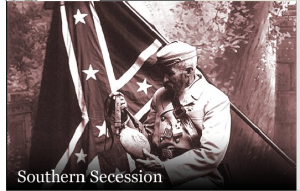A. The Open Educational Resources (OER) movement started in about 2001. There are a number of projects out there, such as MIT OpenCourseWare Project, Carnegie Mellon, and Yale. Then we came along about four years ago. We wanted to build an OER site for high school and community college students, a repository for general education curriculum -- algebra, U.S. history, biology, that sort of thing. Most other OER sites out there were for research universities. HippoCampus is a way to get material out to students and teachers who need it. Any student in the country can find course content here that supports a lot of the courses they take.
Q. Who uses HippoCampus?
A. It's used by students, but even more by high school and community college instructors who use the content in their classrooms, sometimes by itself, sometimes alongside a textbook. If you have a textbook, you can search specific pages and up comes HippoCampus content that's relevant to that page's assignment.
We thought most users would be students doing homework, but most site traffic happens between 8 a.m. and 3 p.m. in all four time zones in the U.S. It was a surprise to us; we didn't expect that. Probably more than 80 percent of HippoCampus use is happening in classrooms.
Also, although it's a public site for individuals, we ask that any academic institution that wants to use this content become a member. For a modest annual membership fee, members access additional services [such as content related specifically to testing and state standards] and interact with and support each other. More than 20 of the state departments of education and virtual schools are members. Quite a few big school districts are members, such as Los Angeles Unified School District and New York public schools, as well as a number of community colleges.

An image from the Civil War section on Hippocampus
Q. Where does the content come from?
A. A large amount of the original content came from the University of California. In the 1990s the University of California (UC) system was given a mandate by the state to build resources for students who didn't have access to Advanced Placement (AP) courses, since to get accepted to the UC system you pretty much had to have AP courses on your transcript. But many high schools, especially in the Central Valley, didn't offer them. There was a lot of content built for that purpose. We used a grant from the William and Flora Hewlett Foundation to get the content into shape to be useful not only for teachers in California but across the country.
Over time, content has been donated from institutions such as the University of Colorado or Chattanooga State Community College in Tennessee. In the last couple of years we've taken to producing new content ourselves that we needed but couldn't get our hands on [from university donations].
Q. How is HippoCampus funded?
A. Partly it's grant-funded: We received a grant from the Hewlett Foundation to build an algebra program and a grant from the Bill and Melinda Gates Foundation to build a developmental math program for the nation, including multimedia activities, video and audio, animation and graphics, game-based study, and collaborative learning.
And while we don't require that all academic institutions interested in using the content become sustaining members [meaning they pay an annual membership fee], about 75 percent of our costs are already covered by sustaining members. We anticipate that this year we will break even and no longer need grant funding. This is pretty similar to the PBS funding model.
Q. What are your plans for HippoCampus' future?
A. Because we want to make HippoCampus more useful for classroom teachers, we're going to allow access to content from multiple places so that a specific search on HippoCampus will bring up relevant content in all these other collections. For instance, Khan Academy, a massive collection of free educational videos on subjects like algebra and chemistry, will be housed on HippoCampus, too.
The site's design is also going to change so that teachers can essentially build their own playlist from the content -- some content from NROC, some from Khan Academy, some from the Stanford collection, and so on. That playlist can become part of their syllabus. They can build it so that it's correlated back to the textbook they're using, too. We're doing a soft launch of the new design this spring for members, and an official launch this summer for the public.



